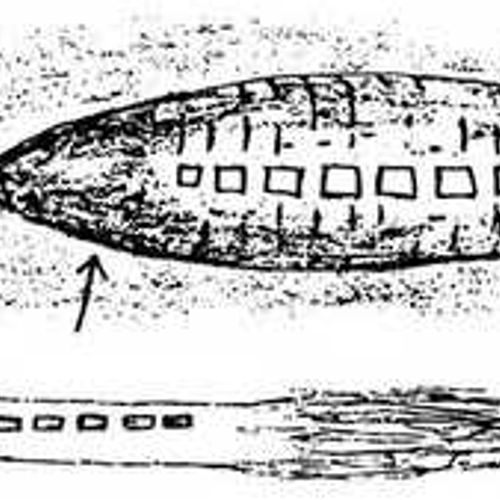| ID | #1712064874 |
| Added | Tue, 02/04/2024 |
| Author | July N. |
| Sources | |
| Phenomena | |
| Status | Hypothesis
|
Initial data
Alexander Glebovich Bekhterev writes to the Commission on:
This UFO phenomenon occurred on October 6, 1978 in Syktyvkar, Komi ASSR, in the time period from 18-30 to 19-35.
A bright, moon-colored cloud, completely invisible to us from behind the roofs of houses, appeared before our eyes.
On this day, the weather was even, the temperature was -6 degrees, the clouds were variable, the wind was moderate south-westerly.
Almost all phases of the phenomenon were seen by me, except for the very beginning of the appearance of UFOs over Syktyvkar, hidden from us by houses of one floor and a small hill 8-10 meters in the direction of our movement.
That spherical bright cloud, from which the object itself flew out, was located at about an angle of 30-40 degrees to the horizon. A wide, even brighter trail came out of it, which is clearly visible in photo 1.
During the UFO flyby, we clearly saw the constellation Ursa Major in front of us.
Recordings and measurements were made immediately after the UFO sighting.
The UFO over Syktyvkar, as seen in the photos, looked like a rocket taking off, but having incomparably greater brightness and speed of movement. In addition, there was no clear direction of the rocket's flight from the bottom up, and the trail rather gave the impression that the UFO entered the atmosphere from above, then moved above the ground and went up again. Moreover, if the first phase of movement (entry into the atmosphere and flight above the ground) If the tail glow was accompanied by a very bright, not much smaller than the "core" of the UFO, then the second phase (climb) was accompanied by a sharp change in the glow of the tail and its complete attenuation.
This process was accompanied by a gradual lagging of the tail from the "core" of the object. just at this moment, first one, and later 2 satellites, glowing like barely visible stars, separated from the UFO with a short period of time (2-3 seconds).
For some seconds they flew, keeping up with the main body, in the gap between the "core" of the UFO and its tail. The body that flew out first was further away from the UFO and closer to the tail, while the other two moved in parallel closer to the UFO (the moment in photo 6).
And so, having made a turn upwards clearly visible to the eye, having lost the luminous tail, the body flew towards the horizon. at the same time, its color changed from brilliant moonlight to light red. So we followed this reddish dot with our eyes all the way to the horizon, as far as our visual acuity allowed us to distinguish it in the sky.
It should be noted that this phenomenon was not accompanied by any sounds and, with all the apparent changes in altitude, did not change its speed and direction of movement (from west to east).
To this explanation, I attach the negatives of 7 photographs taken on October 6, 1978 over Syktyvkar. The film B was developed in the developer D-76 for 40 minutes and, according to the sample, gave 1000 units of GOST. All the pictures were taken for 1\30 seconds. and an aperture of 2.8 with the Zenit-V device.
According to surveys of Syktyvkar residents, with the demonstration of images, many recall the appearance of similar effects over the city 3-4 years ago, and the direction of flight of the object almost always coincides with what I described.
...
Hypotheses
Booster, the rocket and tracks

For UFOs often take stages of rockets, parts of space ships burning in the atmosphere, the launches of various missile technology for military purposes, etc., and traces from them. They attract attention mostly in the dark, but in the day time have a greater aura of mystery.
Formation of the track of the launch vehicle occurs in the tropopause (the layer between the troposphere and stratosphere), which sharply reduced the vertical temperature gradient. The emergence of the so-called "jellyfish" influenced by water vapor, which are subject to enhanced condensation.
Events
Rocket launches (from space.skyrocket.de)
- Site: Plesetsk (NIIP-53, GIK-1, GNIIP) (USSR / Russia) Vehicle: Soyuz-U Payload: Kosmos 1042 (Zenit-4MKM #21, Gerakl #21)
Investigation
Resume
Similar facts
Log in or register to post comments

